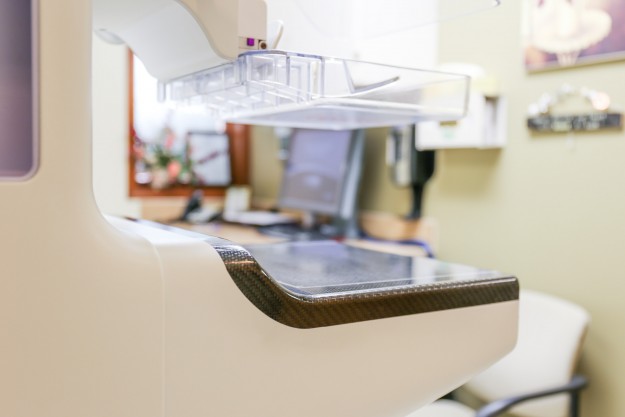A frequent question women ask Susan Harvey, M.D. about mammograms: “Can’t you make it so they don’t squeeze so hard?”
Unfortunately, some discomfort is part of the screening, as breast imagers “compress the breast to get the best quality image,” says Harvey, director of the Johns Hopkins Breast Imaging Division in the Department of Radiology. With that question out of the way, there are several other things women may want to know and perhaps should know about this important cancer screening tool.
For instance, the advice on when to get your first screening mammogram varies between organizations like the U.S. Preventive Services Task Force, the American Cancer Society, and others, and women may feel confused by the conflicting recommendations. These differences “come from variations in perspective” by the organizations, Harvey explains. The UPSTF, for instance, weighs national health care system costs of mammograms heavily in its recommendations, while the ACS comes at the question from the perspective of how many more lives can be saved by this screening.
In breast imaging at Johns Hopkins, Harvey says, we recommend that women get their first screening at age 40, and come annually after that, “because our focus is to save as many lives as possible through early detection, so we recommend the screening methods that have the biggest impact on survival.”
Women may need to get a screening earlier than age 40, she says. She recommends speaking with their doctors or breast cancer specialists about factors that could increase their personal risk of breast cancer, including a family history of breast cancer, a patient’s own history of previous breast cancer, previous breast biopsies that have turned up abnormal tissue, Ashkenazi Jewish descent and genetic mutations in the BRCA genes that have been linked to a higher risk of developing breast and ovarian cancers.
“Speaking with your primary care physician is important because they know your whole health history,” Harvey advises. “Yet they may not know all the complex details of screening, so reaching out to a breast imaging center where you can speak with a specialist will also be of benefit.”
You may also be curious about the difference between screening mammography and diagnostic mammography. Screening mammography is used “to detect breast cancer in women who have no symptoms,” Harvey says. Diagnostic mammography, on the other hand, analyzes the breasts for abnormalities in women with breast lumps, who have had a history of breast cancer, or women who had some potential problem show up on their screening mammogram that should be examined further.
Women also need to know that there are differences in the mammography technology used for screening and diagnostic imaging. Very few places in the United States now use film screen mammography, where the breast is imaged as an x ray on film. Instead, most breast imaging centers use either 2D (full field) or 3D (digital breast tomosynthesis, DBT) digital mammography. The 3D technology, or DBT, was approved by the FDA in 2011, and is the most sensitive and specific screening imaging available.
“3D or DBT has been a fabulous innovation for mammography,” Harvey says. “We detect approximately 40 percent more cancers, and we have approximately 40 percent fewer false alarms or recalls for further imaging that do not demonstrate cancer.” While private insurance has been slow to cover this examination, the state of Maryland passed legislation in March of 2017 requiring insurance companies cover the cost of the exam. Medicare and Medicaid were early to cover it.
The Affordable Care Act mandates insurance coverage for screening mammograms for women under most private health care plans, Medicaid and Medicare. “But a lot of women don’t know this, and a lot of insurance companies may not comply with it, so it becomes complicated,” says Harvey. “For instance, it varies from state to state whether you will need a referral from a primary care doctor to get a mammogram, and there are insurance plans that won’t cover your screening mammography unless there is a referral.”
Harvey says that breast imaging experts are improving their techniques to lower the rates of “false positive” mammograms—when an image looks abnormal but there is no cancer found. She says women are “less likely to have a false alarm and more likely to have a cancer identified early” at imaging centers with radiologists who specialize in breast cancer imaging.
Harvey is proud that the Johns Hopkins center is among those that have lowered their rates of recalling women from screening for additional evaluation —limiting it to 6 percent of mammograms, well below the recommended rate of 10 percent.
“My job is to save lives by identifying breast cancer early, and we hope all women are accessing this important screening tool annually,” she says.
